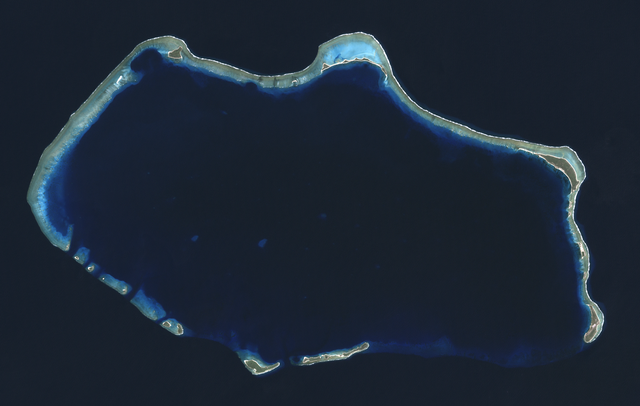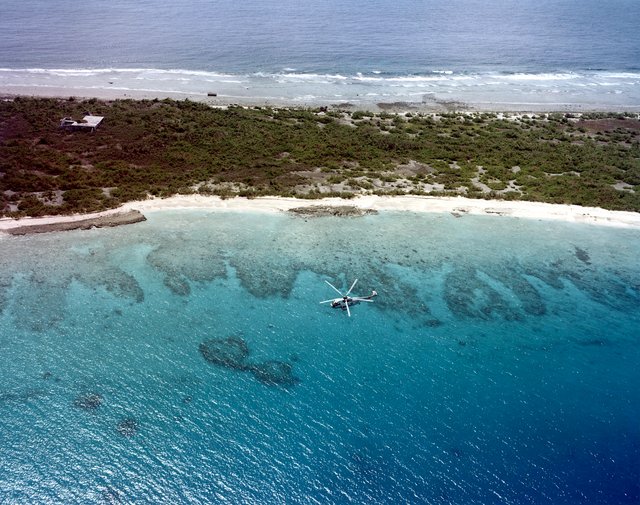Corals and marine life seems to be thriving in the Bikini Atoll – the area where the US detonated 23 nuclear warheads during the Cold War!
During the Cold War arms race, the United States were extremely interested in creating effective nuclear weapons. They worked on them, but before being able to brag about how powerful they were, they needed testing, and for 23 of these nuclear bombs the Bikini Atoll was picked as a designated test area. The atoll is located in the Marshall Islands, and is roughly 6 square kilometers wide. It was a suitable place to detonate nuclear bombs and witness the damage they could inflict, and as we all know the explosions there were extremely destructive.

Satellite image of Bikini Atoll. Image by NASA, posted as Public Domain.
It is now 60 years since the last nuclear bomb was dropped on the atoll, and a research team from Stanford University have returned to the atoll to check out how to biodiversity is in the area now. No one has expected there to be a lot of life there only 60 years after 23 different nuclear tests, but to the researchers surprise there was lots of corals, fish, sharks, crabs and other marine animals in the area!
This huge surprise shows that some life forms might actually be more resistant to nuclear radiation than previously anticipated, but the results from the research is not fully completed yet, so we can’t really draw any conclusions at this point. The researchers from Stanford University are now working on sequencing the DNA from the local corals in hope to trace the patterns and rate of mutations. The results will hopefully teach us a lot more about how the long-term genetic effects of nuclear radiation is.

A view of the Bikini Atoll. The corals can be seen in the shallow waters. Image by U.S. Department of Energy, posted as Public Domain.
Do the marine animals in the atoll have cancer?
One would expect the local fauna to have a high degree to cancer and other genetic diseases because of the nuclear radiation, but we will need to wait for the research team to complete their studies before we can learn about this.
Despite lots of marine animals in the area seeming fine, they might have bad genetic material, making them unsuitable to long-term survival of their population. There have been reports of mutated sharks in the Bikini Atoll, and the research team even tracked down a shark that was missing its second dorsal fin, so there could still be lots of damaged animals in the area.
However, the corals and the marine life seems to be doing pretty great consider the fact that this atoll was bombarded with extreme amounts of nuclear radiation, and hopefully the results from the study will teach us a few things about how our DNA responds to long-term effects of radiation.
Thanks for reading
Thanks for reading the post about the life in the atoll after the nuclear tests in the Cold War era. If you are interested in learning more about this subject, check out the documentary called “Big Pacific” that aired on June 28 2017 to see footage from the research trip. I bet we will also learn a lot more in the coming years as the data from the study will be published and made available for all of us to read, so I’ll make sure to make a new post when this is published.
And as always, leave a comment below if you got anything you want to share with the rest of us. I always do my best to answer all questions, criticism and comments!
Please submit your best underwater shots to my paid contest at https://steemit.com/travel/@underwaterwoman/steemit-s-first-underwater-photo-challenge-share-your-best-underwaterphoto.
That seems like a cool challenge, but sadly I don't do underwater photography :(
Interesting post ))
Thank you :)